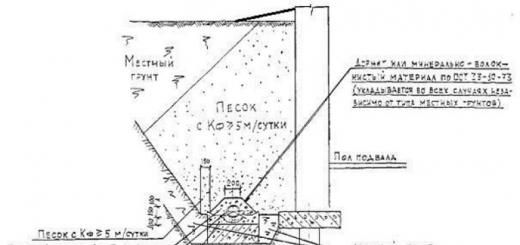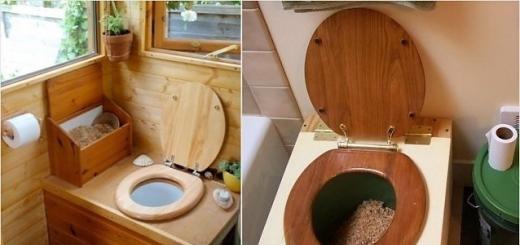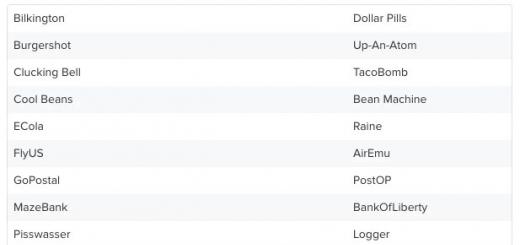The group of transport and procurement costs (TZR) includes costs that are aimed at the procurement of materials, raw materials, tools and delivery material assets. Legislative regulation of the composition of these expenses is carried out through the Order of the Ministry of Finance dated December 28, 2001 No. 119n and the norms PBU 5/01.
The composition of transport and procurement costs
The transport and procurement type of costs include payment transactions for services for the delivery of materials, storage of valuables at warehouse facilities and on the territory of third-party companies. This category includes contributions under insurance contracts (if the transported cargo is insured), customs duties paid. As a TZR, you can show in accounting:
- payment of invoices for services rendered by intermediaries;
- repayment of obligations to service loans taken for the purchase of materials;
- reimbursement of imprest amounts to employees who are involved in the acquisition of inventories;
- the amount of shortages formed within the limits of the standards during transportation.
BTW, the amount of delivery can include not only transportation costs, but also payment for services for loading goods, their unloading at the destination.
The composition of the costs associated with the storage of valuables includes the costs of paying the personnel involved in the procurement, acceptance, preservation and release of materials. Accounting rules allow to set off commission compensations to supply structures as TZR.
NOTE! Each company forms a complete list of transportation and procurement costs independently and approves it with internal documents.
Cost rate
It is possible to take into account transportation and procurement costs in full directly as part of the cost price in cases where the company has small volumes of supplies. Difficulties arise due to possible delays in the provision primary documentation. When working with several item groups, it is recommended to keep separate records of such costs and distribute them proportionally to manufactured products. The TZR norm, which will fall on individual material assets, is calculated by the formula:
Percentage of distribution \u003d (TR, registered on the 1st day of the reporting period + The amount of TZR for the entire analyzed period) / (Tangible assets at the end of the period + Material consumption for the reporting interval) * 100.
If the amount of transport and procurement costs is within 10% of the total value of the material assets available to the enterprise, it is recommended that the amount of such costs be written off to expense accounts in full.
Accounting and tax accounting
For the accounting of TZR, it is typical to implement accounting operations in two ways:
- Inclusion of costs directly in the cost of materials.
- Separate display of the valuation of material assets and the size of the TZR.
In the first case relevant accounting entry D10 - K60. This method is suitable for transactions for the supply of the same type of products, provided that there are no price fluctuations or are insignificant. For example, in one shipment there were homogeneous assets, the cost of transport services is fully attributed to the price of materials.
With separate accounting for the cost of transported material assets and the costs of their transportation and procurement, the following options are possible:
- the use of a combination of 15 and 16 accounts, the last of which is intended for fixing cost deviations;
- by introducing an additional sub-account to 10 or 41 accounts into the working chart of accounts to designate TZR;
- attributing the amount of costs to the cost of goods, which is accumulated on account 44 (this rule is relevant for trade organizations and can only be applied to goods).
Write-off is carried out in proportion to the cost of materials transferred to production departments. For example, during the month, TZR are accumulated on the 15th account, after each monthly interval, the distribution of expenses for materials used for production purposes (or for realized values) is made.
IMPORTANT! The enterprise can apply only one of the specified methods, the chosen option must be specified in accounting policy.
In the reporting documentation, the value of transport and procurement costs is reflected in the balance sheet. In this document, costs are included in inventories and are reflected in the amount on line 1210. In relation to the report on financial results transport and procurement costs can be indicated in several ways:
- when fully charged directly to the cost of materials, the costs are shown in column 2120;
- when maintaining separate accounting with subsequent distribution - in the cell under the code 2120 or 2210.
Business entities that are authorized to keep records in a simplified form are granted the right to include the entire volume of TZR directly in the costs of ordinary types of activities carried out. They can immediately attribute to expenses not only the amount of TZR, but also the cost of the materials themselves. The rule also applies to valuables that are supposed to be used for administrative needs.
Tax accounting provides, as well as accounting, two options for action:
- direct transfer of the value of TZR to the cost of transported material assets;
- separate reflection of delivery operations.
In the latter case, the amount of transportation and procurement costs is accumulated within a month, and upon its completion is distributed among the goods released to the production workshops, the products sold and the units remaining in the warehouses. For each nomenclature name of materials, the calculation of the TZR is carried out using the formula:
TZR for the values released from the warehouse = Valuation issued valuables for the period under review * (VAR, which were fixed in relation to the balance of materials at the beginning of the period + The total value of the VVR for the reporting interval) / (Valuation of tangible assets issued during the reporting period + Valuation of the balance of valuables calculated at the end of the period) .
For purposes tax accounting for goods, the method of one-time attribution of TZR to other expenses is applied (an exception is made only for transportation costs incurred in connection with delivery to the warehouse). Insurance costs are taken into account on the date of transfer of the insurance premium, customs duties are included on the day of actual payment, and compensation to intermediaries is recognized on the date of signing the report or certificate of services rendered.
Accounts, standard correspondence
If the transport and procurement type of costs is distributed to material assets that are credited in the amount of the actual cost, then accounting transactions will be carried out with the participation of debit 10 and credit 60 of the account. In situations where materials are accounted for according to planned or accounting cost indicators, the TZR with the acquired resources are accumulated on account 15. The next step is to transfer their cost to account 10 (the amount is expressed in the amount of the planned price). The final stage will be the write-off of the TZR to account 20, followed by the derivation of the planned cost and its deviation from the fact.
IMPORTANT!
All formed deviations should be shown separately on the 16th account.
Write-off of transport and procurement costs can occur automatically without additional accounting operations. This method is relevant for cases where the value of the TZR was included in the cost of purchased materials. The write-off process will be reflected in the record D20 (or 23, 26, 91) - K10. When using other methods of accounting for TZR, their write-off will be issued as a separate correspondence.
Typical postings that reflect the acquisition of material assets and the amount of TZR from entrepreneurs on the simplified tax system:
- D10 - K60– designation of the fact of purchase of certain products;
- D20 - K60- fixing the amount of TZR;
- D20 - K70- the earnings of the employee who participated in the transportation were taken into account;
- D20 - K69– shown insurance premiums accrued on the wages of the driver or freight forwarder.
Examples of correspondence on the operations of companies practicing the use of the method of accounting for materials at planned prices:
- D15 - K60- the value of the purchase cost of material assets is indicated in the accounting;
- D19 - K60– accepted for VAT accounting;
- D15 - K60- the size of the TZR is shown;
- D10 - K15- with the help of this record, the values are capitalized using the discount price;
- D16 - K15- if deviations are detected between the planned prices and the actual ones, their volume should be fixed by this posting.
If you refuse to introduce a system of planned prices and reflect indicators in the accounting in the amount of the actual cost, the first entry will be the designation of the purchase price of assets through debiting 10.1 and crediting 60 accounts. On an additional analytical sub-account 10.1.1, the price of delivery is indicated, the posting looks like D10.1.1 - K60.
Any organization involved in the purchase of finished products for resale or materials for the manufacture of goods is faced with the concept of "transport and procurement costs" and the need to account for them. Responsible persons should be familiar not only with the specifics of such costs, but also with all possible options for their calculation and subsequent distribution.
The organization, purchasing goods, is faced with the need to pay transportation costs. But not all enterprises know what this means. The decoding of TZR is quite simple: these are transportation and procurement costs. They can include many types of costs. In general, they may include any costs incurred by the enterprise for its own supply of MPZ. All of them are included in the actual cost of finished products, but may be related to direct or indirect costs.
The exact concept of transport and procurement costs is given in the Guidelines (paragraph 70), which were approved by the Ministry of Finance in Order No. 119n of December 28, 2001. According to the document, TZR refers to the costs of an enterprise that are directly related to the procurement and delivery of materials to production.
TZR list
There is no complete list of TZRs. This is largely due to the fact that the characteristics of transport and procurement costs at different enterprises are different, due to the specifics of the organization's work. In general terms, the number of TZR includes the costs associated with:
- loading and unloading materials;
- transportation not included in the cost of goods;
- the maintenance of warehouses intended for the storage of materials until they are used in production;
- the maintenance of storage and procurement points in the places of the procurements themselves (minus wages and social package);
- payment for the work of organizations providing intermediary, supply or foreign economic services (we are talking about margins and allowances);
- crossing customs borders;
- costs for storing materials in ports, marinas or railway stations;
- business trips aimed at the purchase or procurement of materials;
- the occurrence of a shortage or damage to materials during their transportation or storage (but not more than the prescribed amount of natural loss).
The total amount of TZR may include other amounts. The main thing is that the types of costs fall under the definition of transport and procurement costs.
Accounting procedure
Legislatively established and methods of accounting for TZR. All 3 possible options are listed in the Guidelines. These are the following methods:
- assignment to account 16 (deviations in the cost of inventory are displayed there);
- assignment of TZR to account 10 “Materials” (but additionally a separate sub-account is created here for such expenses);
- inclusion of TZR in the actual cost of purchased materials, which are accounted for on account 10.
The latter option is usually used by companies where the amount of materials used is small or if certain types of materials are significant. Most often, it helps to take into account the TZR account 10, or rather a separate sub-account.
Regardless of which option the company has chosen, it is necessary that the accounting policy specifies the possibility of using it.
For simplistic people, another option for writing off TZR is provided. According to paragraph 13.1 of PBU 5/01, this can be done immediately at the time of the occurrence of these costs.
Formulas for tax accounting of TZR
Speaking of TPP, it must be remembered that their tax accounting has some nuances. Moreover, the formula for transport and procurement calculations will depend on whether the organization is a trade organization or produces goods. But in both cases, the accountant must determine the size of the TZR for a specific period as accurately as possible.
Trade enterprises are guided by Article 320 of the Tax Code of the Russian Federation. The calculation scheme for this is as follows:
- Calculates the percentage of TZR. The formula for its definition is as follows:
K \u003d (TP0 + TP1) / (T1 + T2) * 100%, where:
- K - the average percentage of TZR for the remaining goods at the end of the month;
- TP0 are those TZR that fall on the balance of unsold products at the beginning of the period;
- TP1 - TZR incurred in the month under review;
- T1 is the purchase price of products sold in this period;
- T2 - the cost of acquiring products that remained unsold.
- The amount of TZR for unsold goods (TR ost) is calculated by multiplying the obtained coefficient by the balance of goods at the end of the month.
- Next, the amount of expenses suitable for write-off is determined. In this case, the following TZR formula is used: TP0 + TP1 - TP stop.
If we are talking about production, then it is not the goods that are taken into account, but the materials used by the enterprise.
The cost of transport and procurement costs without VAT is determined at the estimated rate of 100/118 of the total cost of services. The amount of VAT is determined at the estimated rate of 18/118 of the total cost of services. Transport and procurement costs are distributed among the balances of materials remaining in warehouses and spent on production, according to the average percentage of transport and procurement costs.
Comments: TZR in 1 line is calculated by the formula: multiply the coefficient of the corresponding sub-account by the TZR from Table 2.8.
Data for the second line is taken from 8-13 wiring. 3rd line - sum 1+2.
% TZR: (TZR \ St-t at the prices of suppliers) * 100
Line 6: the sum of the fifth line for products.
7 line: 3-6 line.
Table 2.21
Calculation of transport and procurement costs
|
Indicators |
Basic materials |
Purchased semi-finished products |
Other materials |
Spare parts |
Inventory of little value |
|||||
|
Cost at supplier prices |
Cost at supplier prices |
Cost at supplier prices |
Cost at supplier prices | |||||||
|
1. Balance at 1.03 | ||||||||||
|
2. Received in a month | ||||||||||
|
3. Total with remainder | ||||||||||
|
4. % TZR to the cost at selling prices | ||||||||||
|
5. Spent per month: | ||||||||||
|
For products A | ||||||||||
|
For products B | ||||||||||
|
For workshop expenses | ||||||||||
|
For general expenses | ||||||||||
|
6. Total spent | ||||||||||
|
7. Balance at 1.04 | ||||||||||
Calculation of contributions to social insurance and social security funds
The basis for calculating the amount of contributions to the social insurance and social security funds - Pension Fund Russia (PFR), Fund social insurance(FSS), the Federal Compulsory Medical Insurance Fund (FFOMS), the Territorial Compulsory Medical Insurance Fund (TFOMS) - serves accrued for the month of March wage employees of the enterprise (salary + bonus + vacation pay).
Transport and procurement costs are the costs of the organization directly related to the process of procurement and delivery of materials to the organization. The composition of transport and procurement costs includes:
The cost of loading materials into vehicles and their transportation, payable by the buyer in excess of the price of these materials according to the contract;
Expenses for the maintenance of the procurement and storage apparatus of the organization, including the costs of remuneration of employees of the organization directly involved in the procurement, acceptance, storage and release of purchased materials, employees of special procurement offices, warehouses and agencies organized in places of procurement (purchase) of materials, employees directly engaged in the procurement (purchase) of materials and their delivery (escort) to the organization, deductions for social needs of these employees.
Expenses for the maintenance of special procurement points, warehouses and agencies organized in the places of procurement (except for labor costs with deductions for social needs);
Mark-ups (surcharges), commissions (cost of services) paid to supply, foreign economic and other intermediary organizations;
Fee for storing materials at the places of purchase, at railway stations, ports, marinas;
Interest payment for granted credits and loans related to the acquisition of materials prior to their acceptance for accounting;
Expenses for business trips for the direct procurement of materials;
The cost of losses on the delivered materials in transit (shortage, damage), within the limits of natural wastage;
Other expenses.
Transportation and procurement costs (TZR) organizations are taken into account by:
a) assignment of TZR to a separate account 15 "Procurement and acquisition of material assets", according to the supplier's settlement documents;
b) assigning TZR to a separate sub-account to the “Materials” account;
c) direct (direct) inclusion of TZR in the actual cost of the material (attachment to the contract price of the material, attachment to the monetary value of the contribution to the authorized (reserve) capital, made in the form of material - production stocks, accession to the market value of materials received free of charge, etc.). Transportation and procurement costs are taken into account according to certain types and/or groups of materials.
Write-off of deviations in the cost of materials or inventory for certain types or groups is carried out in proportion to the accounting cost of materials, based on the ratio of the sum of the residual value of the deviation or inventory at the beginning of the month (reporting period) and current deviations or inventory for the month (reporting period) to the amount of the balance of materials at the beginning of the month (reporting period) and received materials during the month (reporting period) at book value.
The resulting value, multiplied by 100, gives the percentage that should be used when writing off the variance or TPR for an increase (price) in the accounting cost of the materials used.
To facilitate the performance of work on the distribution of TZR or the magnitude of deviations in the cost of materials, the following simplified options are allowed:
· with a small specific weight of inventory or deviations (no more than 10% of the accounting cost of materials), their amount can be fully debited to the account "Main production", "Auxiliary production" and to increase the cost of sold materials;
· the specific gravity of the TZR or the magnitude of the deviations (as a percentage of the book value of the material) can be rounded to whole units (i.e. without decimal places);
· during the current month, the TZR or the amount of deviations can be distributed based on the specific weight (as a percentage of the book value of the relevant materials) that prevailed at the beginning of this month. If this led to a significant underwriting or excessive write-off of deviations or TZR (more than five points), in the next month the amount of write-off (distributed) deviations or TZR is adjusted by the specified amount of the previous month;
TZR or the magnitude of deviations can be distributed in proportion to their specific weight (norm), fixed in the planned (normative) cost estimates, to the book value of the materials used. At the same time, if the actual sizes of deviations or TZR differ from the standard sizes, in the next month ( reporting period) the sum of distributive deviations or TZR is corrected, i.e. increases by the unfinished amount or decreases by the amount overwritten in the previous month (reporting period). The balance of the inventory or the amount of deviations at the beginning of each month (reporting period) are calculated based on the specific weight (norm) of the inventory or deviations provided for in the planned (normative) cost estimates to the actual availability of materials at accounting prices;
TZR or deviations can be fully written off on a monthly basis (in the reporting period) as an increase in the cost of used (issued) materials, if their share (as a percentage of the contractual (accounting) cost of materials) does not exceed 5 percent.
When writing off transport and procurement costs in accounting, an entry is made in the debit of those cost accounting accounts to which materials were issued at discount prices (20,23,25,26,29,28,44,90 and others) and the credit of the account 10 subaccount " Transport and procurement costs” or 16 “Deviations in the cost of material assets”, depending on the chosen option for accounting for transport and procurement costs.
All costs associated with the acquisition of goods and supplies are accounted for as a separate expense item on the balance sheet. Subsequently, they must be written off to cost or total amount expenses of the organization for the current period.
essence
In accounting, transportation and procurement costs include the costs associated with the delivery of materials (clause 70 of the order of the Ministry of Finance No. 119n), including:
- loading operations;
- transportation;
- travel allowances;
- storage of materials at railway stations, marinas;
- warehouse complex, including the cost of maintaining procurement points;
- loan fees;
- shortage and damage;
- markups, allowances.
Accounting for transportation and procurement costs is carried out in one of the following ways:
- directly in the cost of materials;
- on account 15 "Procurement of raw materials" separately;
- on a separate sub-account connected to account 10 "Materials".
The chosen method is prescribed in the accounting policy.
postings
If the organization relates the transportation and procurement costs to the actual cost, then the following postings are made:
- Dt 10 Kt 60 (20, 75) - receipt of materials.
- Dt 10 Kt 60 (76, 26) - costs are included in the cost price.
Consider how transport and procurement costs are taken into account separately.
- Dt 10 Kt 60 (20) - the receipt of raw materials.
- D-t 10 K-t 76 (23) - TZR are taken into account.
- Dt 15 Kt 76 - receipt of materials at a contractual cost.
- Dt 15 Kt 76 - transportation costs are taken into account in the actual cost.
- Dt 10 Kt 15 - posting of materials.

The cost deviation is also written off at the time of accounting for raw materials:
- Dt 16 Kt 15 - deviation of the actual cost from the accounting.
- Dt 15 Kt 16 - the excess of the price over the actual cost.
If transport and procurement costs are taken into account separately, the materials should be divided into groups. They will share the costs. Materials will be accounted for at accounting prices:
- approved by the organization;
- prescribed in the contract;
- actual cost for the past period.
If the price deviates from the cost by more than 10%, it must be checked.
If TZR are accounted for separately, they must be written off at the end of the month wiring D-t 20 (25) Set 16 (10).
Fragmentation of expenses
Let us consider in more detail how it is possible to distribute transport and procurement costs:
- The percentage of costs does not exceed 1/10 of the cost of all materials: all costs taken into account in the current period are fully distributed to materials written off to accounts 20, 23 and 91-2.
- TZR does not exceed 5% of the cost of materials: the amount of expenses is fully written off in the current period to the cost of imported raw materials.
- According to the average percentage of expenses.
- Percentage at the beginning of the reporting period. Over or under costs in the current month should be corrected in the following month.
- According to the regulations. Amounts of expenses exceeding the approved values are taken into account in the next period.

Calculations
As indicated, transport and procurement costs in some cases are charged at the average percentage. Let's take a closer look at how to calculate it:
- (Balance of transport costs at the beginning of the period + The amount of expenses for the delivery of materials in the current month): (Value of stocks at the beginning of the month + Cost of materials received) x 100%,
- Average % of written-off minimum wages: Book value of stocks.
Example 1
JSC is engaged in the manufacture of metal products. The enterprise keeps records of materials on accounts 15 and 16. As of 01.02, the balance sheet included:
- sch. 10: 10 tons of metal in the amount of 28,000 rubles;
- sch. 16: the balance of the TZR in the amount of 3000 rubles.
Within a month, the OJSC bought 50 tons of metal for the amount of 168,150 rubles. The cost of delivery of this batch is 17.7 thousand rubles. In the same period, 35 tons of metal were transferred to production. Wiring:
- Dt 15 Kt 60 - 142.5 thousand rubles. - supply of metal.
- Dt 19 Kt 60 - 25.65 thousand rubles. - VAT included.
- Dt 68 Kt 19 - 25.65 rubles. - the tax on the purchased raw materials is accepted for deduction.
- Dt 10 Kt 15 - 140 thousand rubles. - metal is credited.
- Dt 15 Kt 60 - 15 thousand rubles. - Includes shipping cost.
- Dt 19 Kt 60 - 2.7 thousand rubles. - Accounting tax from the TZR.
- Dt 68 Kt 19 - 2.7 thousand rubles. - deduction of tax on TZR.
- Dt 16 Kt 15 - 17.5 thousand rubles. (142.5 + 15 - 140) - the difference between the price and cost has been written off.
- Dt 20 Kt 10 - 98 thousand rubles - the metal was transferred to production.

The cost of raw materials to be written off in February is calculated as follows:
- 2.8 - 10 + 2.8 x 50 \u003d 168 thousand rubles. - the cost of the metal, taking into account the initial balance.
- 3 + 17.5 = 20.5 thousand rubles. - the amount of TZR, including with the initial balance.
- 20.5 / 168 x 100 \u003d 12.2% - the average percentage.
TZR to be written off in February (98 x 12.2% \u003d 11.956 thousand rubles) are accounted for by posting D-t 20 K-t 16.
Peculiarities
How to allocate storage costs for several types of materials, provided that they were delivered by one carrier? For such cases, the organization can develop a separate cost accounting methodology and fix it in the accounting policy.
For example, you can specify that when delivering heterogeneous minimum wages by one car, the TZR will be distributed in proportion to the quantity, weight or volume. If heterogeneous groups of materials are supplied (some are measured in pieces, others are in tons), then you must either bring all units of measurement to the same denominator, or the costs are distributed between the groups, for example, in proportion to the number of seats in the vehicle. The next step is to allocate costs within each group in direct proportion to the units of measurement operating there.

Example 2
One car delivered one hundred sheets of sheet metal and two hundred meter corners to the organization. Transport and procurement costs amount to 7 thousand rubles. excluding tax. In order to allocate costs, the accountant brought all units of measurement to kilograms. The weight of one sheet is 60 kg, one meter of a corner is 15 kg.
Total weight: 60 x 100 + 15 x 200 = 9 thousand kg.
Metal delivery costs are: 7 x 6: 9 = 4.667 thousand rubles.
The cost of delivery of the corner is: 7 x 3: 9 = 2.333 thousand rubles.
tax accounting
It is possible to take into account in the NU TZR in one of three ways. The selected option should be approved in the accounting policy and applied for at least two years.
Option 1: Write off all inventory costs
If the entire amount of costs relates to one item of materials, then they are fully included in the cost of this item. For example, if raw materials of one name were delivered by car, the entire amount of transportation costs is included in these stocks. If the costs relate to several items of raw materials, then they are distributed in proportion to the value of the inventory.
Example
The transport company delivered materials (0.3 tons of nails and 0.5 tons of screws) to the organization in one vehicle. The cost of the service was 3 thousand rubles. Raw material price: 30 rubles/kg of nails, 10 rubles/kg of screws.
Shipping cost is distributed on raw materials:
- 3 x (0.3 x 30): (0.3 x 30 + 0.5 x 10) = 1.929 thousand rubles. - nails;
- 3 - 1.929 \u003d 1.071 thousand rubles. - screws.

Option 2. TZR are accounted for separately, and at the end of each period they are distributed between goods and stock balances
The calculation of the amount of expenses is carried out separately for each product according to the following formula:
- TZR \u003d Cost of materials in production x (Remainder of TZR at the beginning of the month in the warehouse + the amount of TZR received for the current month): (Cost of materials released into production + Cost of stocks at the end of the period).
In the Tax Code of the Russian Federation, this method is provided only for determining the amount of costs for goods sold. But its use in relation to reserves does not contradict the law, does not lead to distortion of information.
Option 3: Only applies to items sold
All costs, except for delivery costs, are written off as a lump sum to other items. In particular:
- payment for insurance services - as of the date of payment of the premium;
- duties - on the date of payment;
- remuneration to the intermediary - on the day of transfer of funds from the account.
Transportation costs are written off as expenses in the part relating to goods sold in the current period. The amount is determined by the following formula:
- CV = Cost of goods sold x (CV at the beginning of the month + CV of the current period) : (Cost of goods sold + Value of the remaining goods in stock).
With the USN, TZR refer to tax expenses on the date which comes later, whether it is acceptance for accounting or payment to the supplier. The release of raw materials into production does not matter to NU.
Example 3
In June 2015, a trade organization purchased inventories in the amount of 708 thousand rubles. The cost of their delivery amounted to 23.6 thousand rubles. Accounting policy stipulates that these costs are included in the cost. Wiring:
- Dt 15 Kt 60 - 600 thousand rubles. - purchase price of raw materials.
- Dt 15 Kt 60 - 20 thousand rubles. - the cost of TZR.
- Dt 19 Kt 60 - 3.6 thousand rubles. - VAT on TZR.
- Dt 41 Kt 15 - 620 thousand rubles. - actual cost.

Example 4
Let's add the conditions of the previous example. Suppose the accounting policy of a conditional LLC provides that the TZR are included in sales costs. The actual cost is formed on account 41:
- Dt 41 Kt 60 - 600 thousand rubles. - purchase price of raw materials.
- Dt 19 Kt 60 - 108 thousand rubles. - reflected VAT.
- Dt 41 Kt 60 - 20 thousand rubles. - the cost of TZR.
Example 5
There is another way to account. TZR can be displayed on the sub-account of the same name opened to account 44. Then these amounts are subject to write-off.
Suppose an organization delivers goods to a warehouse by its own transport. For half of 2015, the driver's salary amounted to 150 thousand rubles, social insurance contributions - 5 thousand rubles, expenses for fuel and lubricants - 20,000 rubles. Wiring:
- Dt 44 Kt 70 - 150 thousand rubles. - Driver's salary.
- Dt 44 Kt 69 - 53.4 thousand rubles. - payroll fees.
- Dt 44 Kt 02 - 5 thousand rubles. - depreciation charged.
- Dt 44 Kt 60 - 20 thousand rubles. - Fuel costs.
If an organization delivers goods to its warehouse and customers using the same vehicle, then it is very difficult to share costs. In such cases, it is recommended to prescribe in the accounting policy that all amounts will be debited to account 44 without further distribution.

Warehouse complex in non-trade organizations
The procedure for accounting for reserves is described in detail in the Guidelines for the BU MZP. Excess raw materials are written off to account 41 at cost, taking into account the inventory. Non-trading enterprises can buy goods through units that carry out trading activities. Then the TZR are accounted for on account 44 under the sub-account "Commercial expenses".
Multidisciplinary organizations carry out several types of activities. Transportation costs of such enterprises are taken into account at dt account 23, the services rendered are written off from Kt 23 to Dt 20 (29) at cost. The organization can choose the method of distribution of costs independently: in proportion to the implementation, the number of employees. The main thing is to approve this accounting procedure by the appropriate order of the head.
The method of writing off the remaining amounts of TZR at the end of the period is determined by accounting. Most often, these expenses are transferred to Dt 90. The balance of account 44 corresponds to the amount of expenses attributable to the balance of goods not sold at the end of the period. The amount of TZR at the end of the period is determined by the average percentage of costs for the reporting month.










